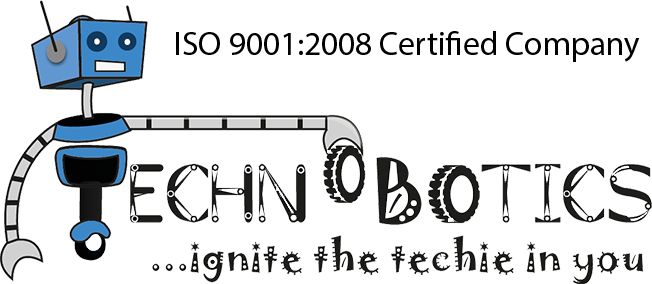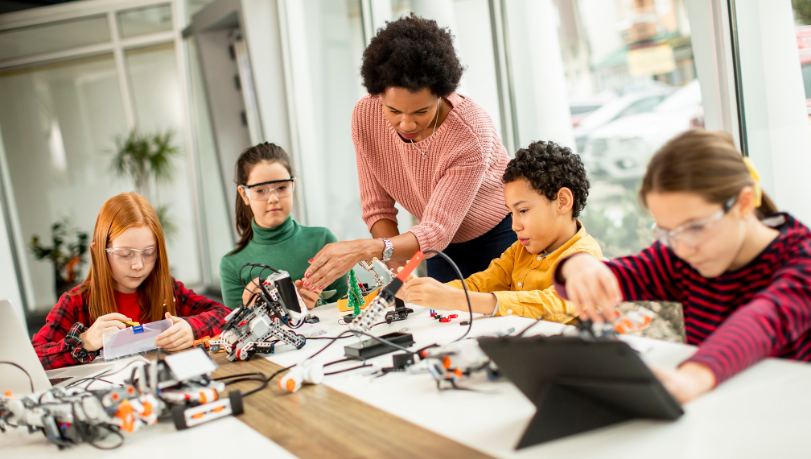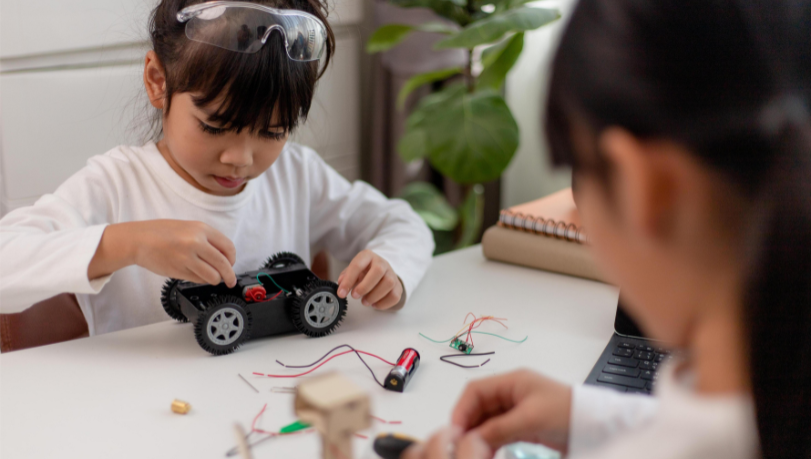SCHOOL ROBOTICS CURRICULUM
Many people may think that robotics curriculum is an extremely complex field but, when introduced to students from a young age, it becomes more accessible, engaging and fun.



STEM
Course Overview:
This course is focussed on boosting the curiosity of an elementary grade student through experiments in Physics. Entities like Motion, Light, Force, Gravity, Electricity, Magnetism etc are kept embedded within the experiment and only a detailed explanation by the trainer will reveal the secret of “How this Stuff Works”. The approach has been kept as “Do and Learn” rather than “Learn and then Do”. These will be the first steps for the child to look at the surrounding world in the light of science. Rainbows, smoke, bursting balloons, all that made them “wow” will now make them ask “how?”.



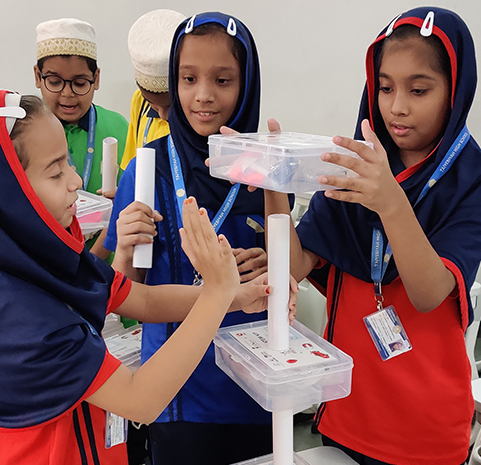
Knowledge and Conceptual Takeaways:
- Notion of Force and its effects.
- Action and Reaction Force.
- State of Rest and Motion: Concept of Inertia.
- Kinetic Energy and Potential Energy.
- Hydraulics: What happens when you try to Squeeze Liquids.
- Notion of Pressure and its relation to Force.
- Magnetism: Poles, Attraction and Repulsion.
- Light: Colours, Shadow, Sunlight.
- Light Phenomenon: Reflection, Refraction.
- Electromagnetism: Magnetic effect of Current.
- Tangent force: Rotation.
- Sound: medium, waves, vibration.
Breadboard Electronics
Course Overview:
Coding and robotics curriculum is specially curated for those who do not or cannot have access to soldering equipment. A Breadboard is essentially like a blank sketchbook for any circuit you want to make. Over the span of this course students undergo a highly Hands-On approach to circuit designing, implementing as well as troubleshooting. And all this without the risks and hassles of any Soldering Equipment. The course takes you through an intuitive as well as descriptive journey through the world of Electronics, where you come out with a mind full of knowledge free of misconceptions, and a heart full of confidence.




Knowledge and Conceptual Takeaways:
- What is current, voltage and resistance?
- What is a breadboard and how does it work internally?
- How to set up your first circuit on the Breadboard?
- Pin Identification of components: Diodes, Transistors, IC’s.
- How Visible Light Sensing Technology Works?
- How Infrared (IR) Light Sensing Technology works?
- How Sound Sensing Technology works?
- Concept of Photoresistor and its working.
Robotics
Course Overview:
This course on Autonomous Robotics (without Programming) takes you deep into the world of Logic Building and understanding the world of Sensor based simple Automatic Robots. Once done, you will have a very clear picture of how the Robot “Feels” and “Senses” the physical world around it. How it senses Light, Sound, Obstacle etc. and moves around seamlessly in a given terrain. Concepts such as Motor Driving, Sensor Interfacing, Timers, Comparators etc. are all taken care of in great detail.

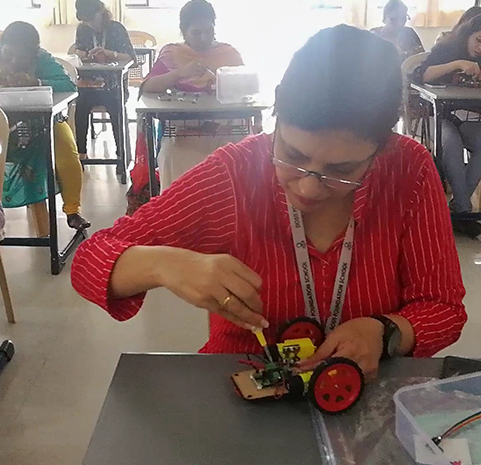


Knowledge and Conceptual Takeaways:
- Identification of common electronic components.
- Concept of different forms of energy transformations.
- Sensors, Detectors and Transducers.
- Sensing energy in the form of Light, Sound, Infrared rays, vibrations etc.
- How various Physical Changes result in Electrical changes.
- Motors and Motor Drivers.
- Different Steering Techniques.
- Concepts of Static and Dynamic Equilibrium of a Robot Structure.
- Interfacing Sensors with Logic and Comparators.
- Interfacing Logic with Motor Drivers.
Enquire now!
Our Associations













